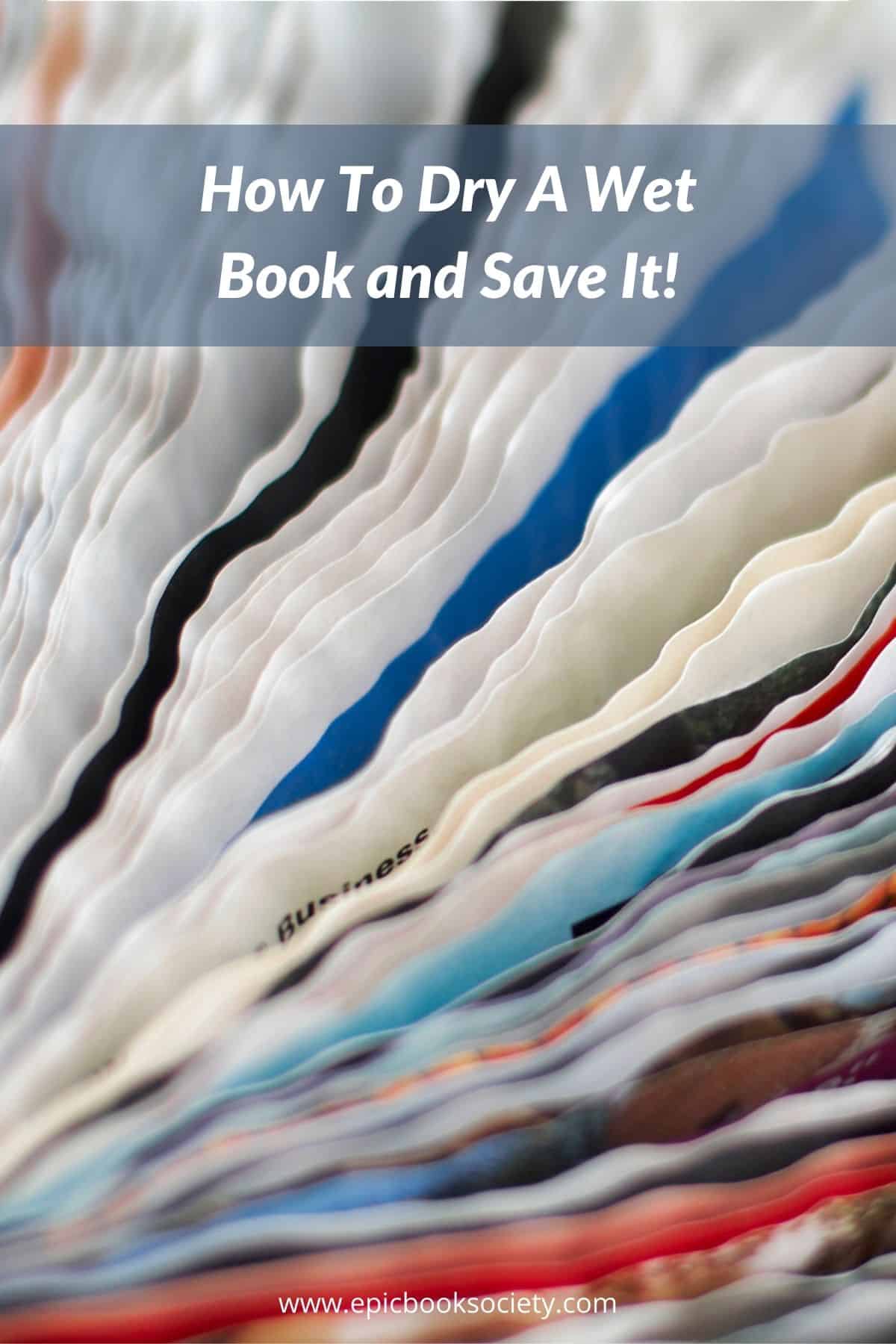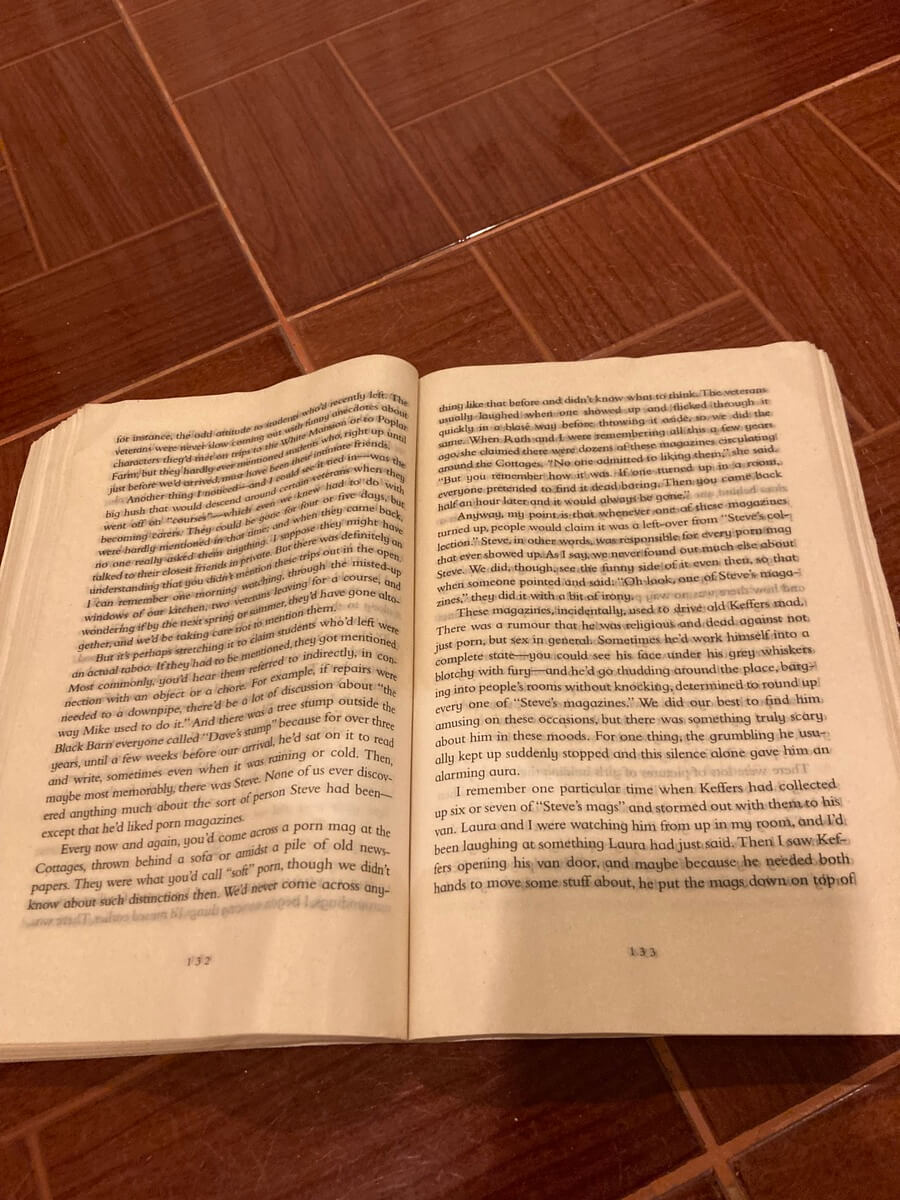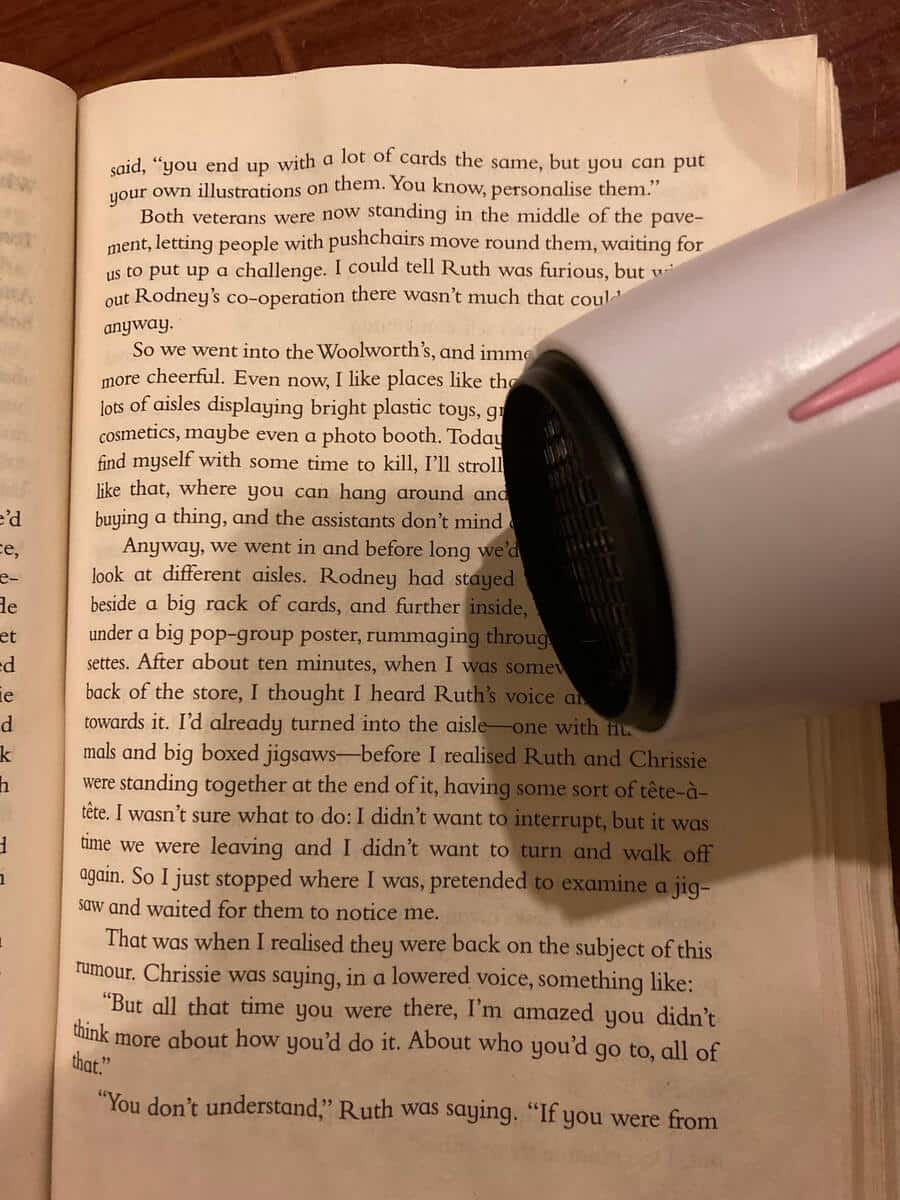Last Updated on August 18, 2023 by Louisa
One of my favorite places to read is the beach. The last time I went to the beach, I didn’t keep an eye on the shoreline when swimming and came back to a completely water-damaged book.
My book wasn’t just a tiny bit wet, it was completely sodden.
When your book is completely wet it can feel like the world is crashing down on you (yes, I am dramatic) but don’t worry, because I know how to dry a wet book and save it so you can read it again once it’s dry.
While your book will never return to its original state, there are ways to dry the pages without damaging them and have it so you can read them again.
How To Dry A Wet Book
Below I will highlight the steps you need to take to dry a wet book. You’ll want to take these steps in order, to ensure you don’t further damage the book.

A step by step guide on how to dry a wet book after it has received serious water damage.
Step 1: Act quickly
The first step in saving a wet book is to act quickly. The longer a book stays wet, the higher the chances of mold growth and permanent damage.
Remove the book from the water source as soon as you realize it’s wet, and be sure to pick it up carefully. It’s tempting to dry to fan the book wet, but this will cause further damage.
Lay the book flat until you can get it to a space where you can start the drying process.
Step 2: Pat dry

Once the book is out of the water, use a clean, absorbent cloth to gently pat the cover and pages dry.
Avoid rubbing or pressing too hard as this can cause further damage to the book.
Open the book to pages at random and carefully press the pages so the water seeps through to the cloth.
If your book is completely soaked and water is dripping, you should leave the book open in a dry area (out of sunlight as this will yellow the pages) before you do this step. This will naturally soak up the water.
Step 3: Separate the pages and hair dryer

After patting the cover and pages as dry as you can, you can start to dry the pages more thoroughly.
Use a hair dryer to dry the pages by holding the hair dryer close to the page. Ensure the hair dryer is on a low setting so the wind doesn’t cause the pages to tear.
I suggest you start by opening the book at random places and dry sections at a time. Then work your way onto the cover and back of the book.
When the book starts to feel somewhat dry, you can start to dry each page individually (yes, it’s a long process).
I recommend you don’t hair dryer the spine. This will melt the glue and further damage the book. To dry the spine, simply use a cloth to wipe it as dry as possible.
Step 4: Air dry
The next step is to let the book air dry some more. This will ensure the pages, cover and spine are completely dry.
Place the book somewhere dry and away from direct sunlight to dry. Lay it flat with the pages closed, otherwise it can cause the spine to break.
Step 5: Dehumidify
To speed up the drying process and prevent mold growth, you can use a dehumidifier in the room where the book is drying.
It will take a few days for the book to dry naturally, especially the spine.
A dehumidifier will remove excess moisture from the air, creating a drier environment for the book to dry in.
Step 6: Flatten the cover (if you want to)

Once the book is completely dry, you can start to flatten the book.
When a book gets wet, the pages become crinkled and bumpy, which is doesn’t look very aesthetic (see picture).
If the cover has become warped or damaged, you may need to use a book press or heavy weights to flatten it out.
If it’s heavily warped, you can either accept that the book will be crinkled from here on, or you can try to iron out the creases and wrinkles.
To do this, cover the cover of the book with a tea towel and iron over it. Ensure the iron is on a low heat and has no water in it – you don’t want steam, as this can damage the pages.
Don’t iron the pages. This can warp the ink and make the text unreadable.
Place the book under a heavy weight after ironing to further flatten the book.
Tips for Drying a Wet Book
To further help you with the drying process, here are some tips I picked up from drying my own damaged books…
- Never use a microwave to dry a wet book as this can cause irreversible damage or even cause a fire.
- Don’t stack wet books on top of each other as this can cause them to stick together and become more difficult to separate. This can also weaken the spine.
- Don’t leave the book open when drying as this can weaken the spine. Keep the book closed, or propped up.
- If your book is dirty, try not to clean the book until it’s dry. If your book is covered in sand or dirt then once it dries it will simply fall off.
- Understand it’s a slow process. Don’t get impatient and get heavy-handed with the hair dryer or it will damage the book.
- Don’t open the book too much when drying the pages. Open it about 40% of the way, just so you can fit the hair dryer in.
FAQs About How To Dry A Wet Book
Here’s what people usually ask me about how to dry a wet book.
Can you use a hair dryer to dry a book?
Most people will tell you not to, but I found a hair dryer to be a valuable tool when drying my book. The hair dryer allows you to speed up the drying process, which could otherwise take a week or so to dry naturally. You just need to be delicate when using it.
How long does it take for a wet book to dry?
If you have a completely soaked book, it will take a week to dry naturally. If you aid the drying process with a hair dryer and dehumidifier, it can take 1-2 days to dry completely.
How do you flatten a water-damaged book?
You should place a tea towel over the cover and iron over it with an iron on low heat. Alternatively, you can use a heavy weight, but this is less effective.
How do you reverse water damage on paper?
There is no way to reverse the water damage completely. Once it has been damaged, you will never have it back to its original form, however you can improve the aethetics by drying it using the hair dryer process and then flattening the book.
Final Thoughts on How To Dry A Wet Book
When your book gets wet it really sucks, but it’s not the end of the world.
The main thing to remember is if you find yourself with a wet book, don’t panic.
Just be sure to follow these simple steps, and you can salvage as much of the book as possible and prevent further damage.
Remember to act quickly, air dry for as long as you can, and be gentle when using the hair dryer, and soon enough you’ll be able to return the book to your bookshelf good as can be.

